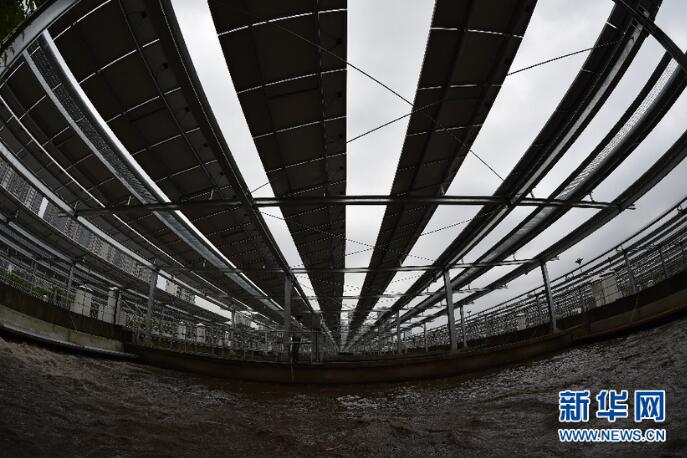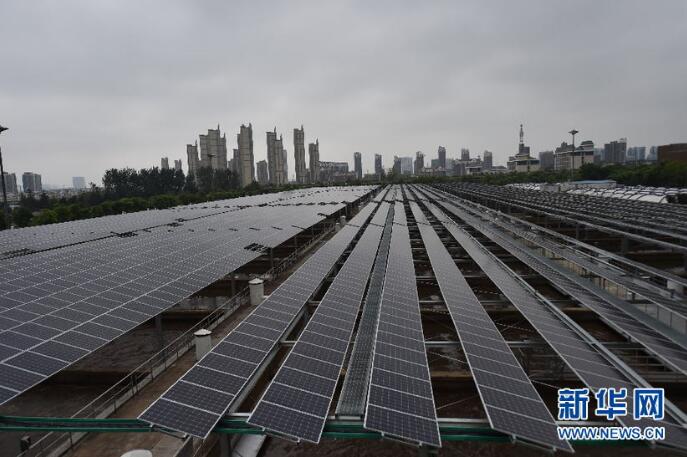Of the total cost of energy consumption, electricity consumption cost makes up the majority. Hence reducing electricity consumption is a helpful measure for enterprises to cut costs and increase efficiency, to push for progress in energy conservation and emission reductions. This will promote sustainable development of sewage treatment industries. In recent years, the country has vigorously developed distributed photovoltaics, which help to alleviate environmental problems caused by the combustion of mineral energy and fossil fuels.
Floating photovoltaic projects and sewage treatment plants are perfectly combined to form an innovative and powerful development model. The pattern of "floating PV plus sewage treatment" features the employment of clean electricity to the treatment of pollutants in the drainage areas. Enterprises that have adopted the method successfully reduce the costs, increase the efficiency, and expand the application of the technology to other fields, gaining both economic and environmental benefits.

Natural Advantages of the pattern "Floating Photovoltaics Plus Sewage Treatment Plants"
1. Full exploitation and utilization of land resources: treatment ponds in the wastewater treatment plants cover a large area. Solar photovoltaic panels are installed on them, which enjoys a unique space advantage. Specifically, it is feasible to carry out secondary development of the large area that water treatment plants occupy, and to intensively use the land to achieve comprehensive utilization of land resources.
2. Energy conservation and emission reductions: sewage treatment plants and other water treatment plants are big consumers of energy and electricity, and they operate and work round the clock with stable electrical load. The electricity generated by floating photovoltaic power plants can by and large offsets the daytime power consumption of the sewage treatment plants, which if is in surplus, can be employed to connect to the Internet.
3. Meet the demand for additional construction projects on the water treatment areas: to meet the technological requirements, some water treatment plants need to be covered with other construction projects to contain the algae bloom and reduce the evaporation of bodies of water. Thus installing mounting systems and solar panels on the surface of the water is in line with their own requirements. Those solar photovoltaic panels will shield the plants from the proliferating algae, which to some extent improves the efficiency of wastewater treatment.
There are some defects of traditional photovoltaic mounting systems. Thus we find another way out. Floating mounting, on the contrary, features 7 edges including anti-corrosion, resistance to wind, resistance to snow, flexible suspension, flexible pull, stability, and hardness. Compared with traditional steel frame structure, floating PV mounting systems entail less photovoltaic brackets, have lighter body materials and lower costs, and help to greatly shorten the overall construction period. In addition, floating photovoltaic mounting does not have those strict requirements on the installation bases and can be pre-assembled conveniently.

Floating mounting systems can save steel and adjust an optimal angle of inclination according to different seasons and the direction of the sun. Besides, they boast excellent heat dissipation performance which contributes to the great improvement of power generation efficiency, and light bracket design which helps to increase the space utilization rate. Floating mounting systems, put simply, mean that the photovoltaic modules are fixed on the steel wire ropes, with two ends connected to the steel structure. They have significant advantages over traditional mounting systems in various complicated terrain conditions such as pools, reservoirs and fish ponds:
1) They can make full use of the space, with the installation of as much as solar photovoltaic panels, which helps to increase power generation.
2) They successfully addressed the problems such as large span, wind and snow effect in sewage treatment ponds.
3) Compared with traditional steel structure, floating mounting entails less photovoltaic brackets, have lighter body and lower costs.
4) They employ methods for installation and anchoring, and settle safety hazards such as collision and falling of the panels in bad weather conditions.
5) With floating mounting systems, the construction period will be considerably shortened, during which the running of the sewage treatment plants will not be affected. (Editor: Claire Jeawin)